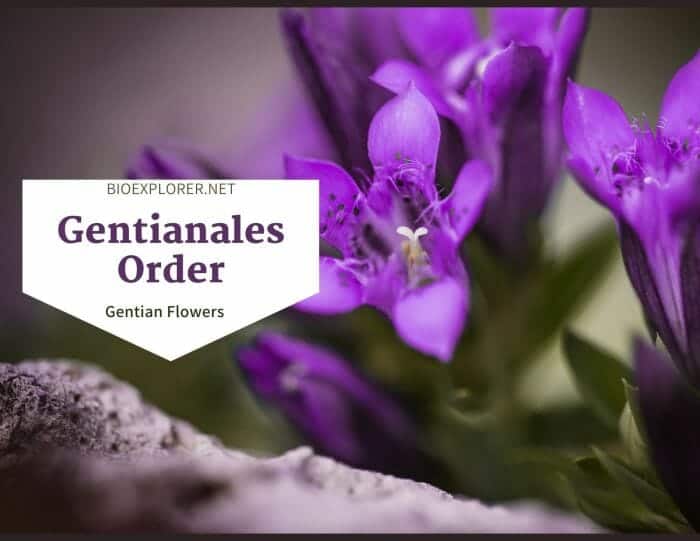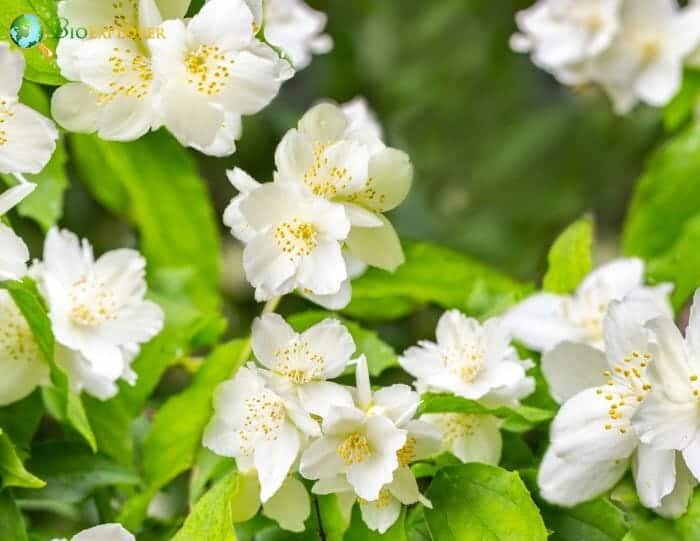
Icacinales is an order of flowering plants that are principally distributed in tropical and subtropical regions of trees, shrubs, and lianas. The members of Icacinales have simple, alternate, and exstipulate leaves, bisexual flowers, usually 4-5 sepals, and commonly 4-6 petals.
The flowers have a superior ovary, and the fruit is usually a drupe with endospermic seeds. The Lemon thorn, English false yam, and monkey chair are some of the useful plants under Icacinales.
Icacinales order belongs to Class Magnoliopsida. Therefore, the APG IV system places 2 direct families[1] under Order Icacinales.
- Icacinaceae
- Oncothecaceae
Table of Contents
Icacinales Distribution
The Icacenaceae family (57 genera and 400 species)[2] is distributed in the tropical and subtropical regions. There are also members in South Africa and Eastern Australia. The Oncothecaceae family, with only 1 genus and 2 species[3], are paleotropical in distribution. The species are found in New Caledonia.
![]()
Icacinales Characteristics
- Plant type: The members of the order Icacinales are trees, shrubs, or lianas.
- Stem: The secretory cavities of the plants are present or absent. There is latex if the secretory cavities are present. The plants have cork cambium. The vessels of the species are tiny to medium.
- Leaves: The leaves of the plants are simple, alternate, and exstipulate. The lamina margins are entire to dentate.
- Flowers and inflorescences: The flowers are bisexual and are typically in racemes. Flowers of some species are in inflorescences of spike, head, or panicle.
- Sepals and petals: The sepals and petals are usually distinct in the perianth. Some species have sepaline or petaline perianth. The sepals, when present, are usually 4 to 5. The corollaWhat is corolla?A collective term referring to the petals of a flower., when present, is composed of 4-6 petal lobes.
- Stamens and carpels: There are usually 4-5 stamens in the androecium and 2-5 carpels in the gynoecium.
- Ovary and fruit: The ovary of the flowers is superior, and the fruit is commonly a drupe.
- Seeds: The seeds of the fruit are endospermic.
![]()
Icacinales Flowers and Reproduction
The Icacinaceae flowers are small, primarily odorless, and bracteateWhat is bracteate?Possessing or bearing bracts.. These flowers are usually bisexual and are in inflorescences of racemes (usually), cymes, spikes, or panicles. Commonly, the inflorescences are axillary. Other flowers are terminal, leaf-opposed, epiphyllous, or cauliflorous. The perianth has distinct calyxWhat is calyx?A collective term for all the sepals of a flower; the lowermost whorl of floral orgrans (Plural form is calyces). and corolla. There are usually 4-5 imbricateWhat is imbricate?overlap or cause to overlap; in botany terms, scales, sepals, or plates having adjacent edges overlapping; with margins of structures overlapping like shingles on a roof. or valvateWhat is valvate?Sepals having adjacent edges abutting rather than overlapping; opening by valves; edges of structures coming together so that the margins touch but won't overlap. calyx lobes. The corolla is typical of 4-6 petals, usually regular and valvate. Some species have sepaline perianth, while others are petaline. The Acacia oliviformis has sweet-scented flowers that are visited by bees and flies.
The Oncothecaceae flowers are small and regular. They are in very short pedicels. The flowers are in panicles (thyrsoid). The Onocothecaceae are bisexual with distinct calyx and corolla. There are 5 regular, persistent, and many imbricate sepals in the 1-whorl calyx lobes. The petals are also 5. These petals are regular, sessile, and imbricate.
![]()
Icacinales Family Differences
Icacinaceae
- Members of the family are trees, shrubs, and lianas.
- The leaves of the plants are primarily simple, spiral, and alternate. Some species are opposite. These leaves are often leathery and rarely membranous. The leaves of the species are exstipulate. The lamina margins are entire to dentate.
- The flowers are often bisexual and are commonly in racemes. Others are in spikes, heads, or panicles.
- The flowers usually have distinct calyx and corolla. In addition, some flowers are sepaline, while there are also petaline flowers.
- The androecium is exclusive of fertile stamens. There are 4-5 stamens; adnate to the corolla tube and free of one another. The gynoecium has 2-5 carpels.
- The ovary is superior, and the fruit is usually a drupe and sometimes a samara.
- The seeds are endospermic. The endospermWhat is endosperm?An embryonic nutritive tissue formed during double fertilization by the fusion of a sperm with the polar nuclei. is oily.
![]()
Oncothecaceae
- The species of the Oncothecaceae are trees or shrubs.
- Plants have persistent, simple, alternate, spiral, and leathery leaves. Oncothecaceae leaves are non-sheathing and exstipulate. The lamina margins are entire or dentate.
- The flowers are bisexual. They are aggregated in panicles (thyrsoid).
- The perianth has distinct calyx and corolla. There are 5 sepals in 1 whorl; regular and much imbricate. The petals are also 5; imbricate and shortly campanulate.
- There are 5 stamens; free of one another and adnate to the corolla tube. There are also 5 carpels in the syncarpousWhat is syncarpous?Flowering having united carpels; Contrast apocarpous. gynoecium.
- The ovary of the flowers is superior. The fruit is a drupe.
- There are 2-5 seeds per fruit. These seeds are copiously endospermic.
![]()
Icacinales Example species

Some members of Icacinales are used for ornamental or medicinal purposes. The following are the plants that belong to the Icacinales order.
- Sarcostigma kleinii – The plant’s fruit, leaves, and young shoots are edible. The bark and the leaves are used in traditional medicine. The oil is also medicinal. Further, the oil extracted from the seeds is used to illuminate the lamp.
- English false yam – The leaf and the root have many medicinal uses. In Gambia, the leaf is used as a container for carrying cashew nuts. The leaf is also used in the burial ceremony in the Tenda ritual.
- Alsodeiopsis schumannii – The fruit is edible. The timber of A. schumannii is used to make poles, pestles, carvings, tool handles, and spoons. Also, this species is used as an ornamental plant.
- Iodes cirrhosa -The roots of the I. cirrhosa are used for medicinal purposes.
- Mappianthus iodoides – The fruit of M. iodoides is edible. This plant’s roots and ripe stems are harvested in the wild for medicinal use.
- Nanas Batu – The Nanas Batu plant is used for landscaping.
- Monkey chair – The monkey chair is used as an ornamental plant.
- Lemon thorn – Lemon thorn is used in landscaping.
- Oncotheca humboldtiana
- Oncotheca balansae
![]()











